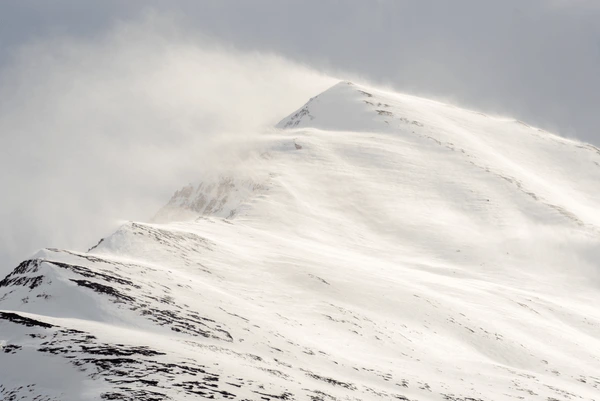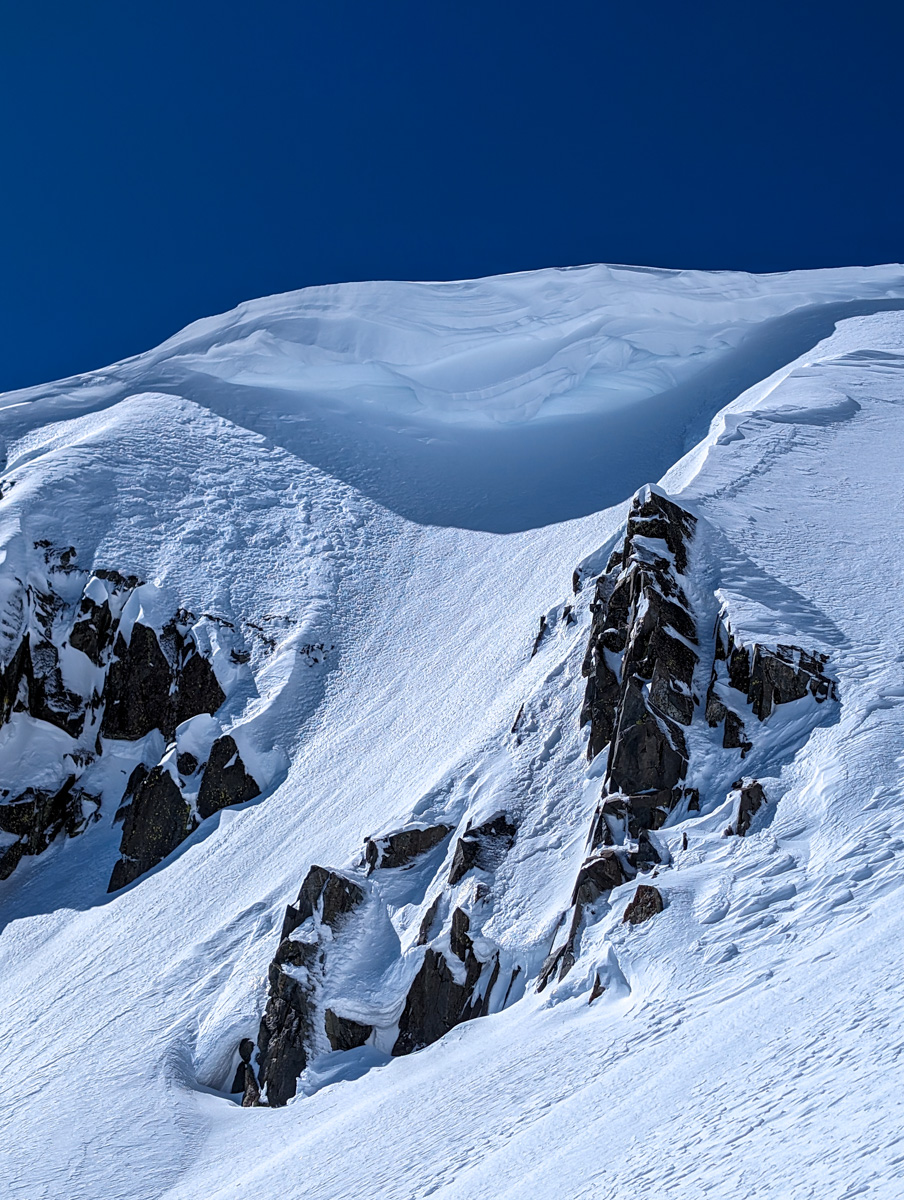
What is Wind Loading?
Think of wind loading like nature’s own snow transportation system. Just as a conveyor belt moves packages from one place to another, the wind picks up snow from windward slopes (where the wind hits first) and deposits it on lee slopes (the sheltered side). But here’s the catch—this isn’t your light, fluffy pow we’re talking about. When wind moves snow, it breaks down those beautiful stellar dendrites and packs them into dense slabs that can spell trouble for backcountry travelers.
How Wind Affects Snowpack Stability
Ever carefully stacked books on top of a house of cards? That’s similar to what happens when wind deposits snow onto a slope. Each gust adds another layer, creating a dense slab that sits precariously on top of the existing snowpack. The difference between wind-transported snow and naturally fallen snow is striking—while fresh snow falls gently and settles gradually, wind-loaded snow gets compacted and densified during transport, creating those notorious wind slabs we’re always worried about.
The real kicker? Wind can deposit snow up to ten times faster than it actually falls from the sky. A six-inch storm can easily transform into feet of wind-loaded snow in certain areas while completely stripping others bare. This variability is what makes wind loading such a critical factor in avalanche forecasting.
Cornices: Wind’s Snow Sculptures

If you’ve spent any time in the mountains, you’ve probably seen them–those dramatic overhanging snow formations that look like frozen waves about to break. These are cornices, and they’re some of the most obvious signs of wind loading in action. While they might make for great photos, cornices are the mountain’s version of a false floor–they can break much farther back than you might expect, and when they do, they often trigger avalanches on the slopes below.
Forecasting Wind Loading
When planning a backcountry day, one of the first things I look at is recent wind history. But what exactly should you be looking for? Here’s the breakdown:
- Wind Speed: Anything over 15-20 mph can transport snow
- Wind Direction: Consistent direction creates more pronounced loading patterns. The wind will load slopes facing the opposite way of where the wind is blowing from
- Duration: The longer these conditions persist, the more significant the loading
But numbers only tell part of the story. Visual indicators out in the mountains are just as important:
- Snow blowing off ridges (what we call “snow smoke”)
- Sastrugi (those crunchy wave-like patterns in the snow)
- Drifting patterns around trees and rocks

Practical Tips for Skiers and Riders
Let’s get down to the nitty-gritty of what this means for your next backcountry adventure. Here are some key things to watch for:
- Lee Slopes are Loading Zones: Pay extra attention to slopes on the downwind side of ridges – these are where wind-transported snow accumulates.
- The Sound Test: Wind-loaded snow often sounds hollow when skinning or walking across it. If you hear this, it’s time to reassess your route.
- Recent Weather Matters: Even if it hasn’t snowed in days, strong winds can create avalanche conditions with old snow.
- Signs of Instability: Watch for:
-
- Shooting cracks in the snow surface
- A dense, cake-like layer over softer snow
- Recent avalanche activity on similar aspects
Remember: your partner, beacon, shovel, and probe are essential, and you should never ski in the backcountry without them, but they’re your backup plan. Your primary safety tool is between your ears–using it means staying informed and making conservative decisions.
Conclusion
Wind loading isn’t just another factor to consider in avalanche safety–it’s often the architect of avalanche conditions. Understanding how wind moves snow and creates hazards makes you better equipped to make smart decisions in the backcountry.
The mountains will always be there for another day. When in doubt about wind-loaded terrain, remember that the best turns are the ones you live to talk about over après beers.
Stay safe out there, and never stop learning about the environment you’re skiing in. Before heading out, always check your local avalanche forecast at avalanche.org, and remember–terrain choice is your best tool for managing avalanche risk.